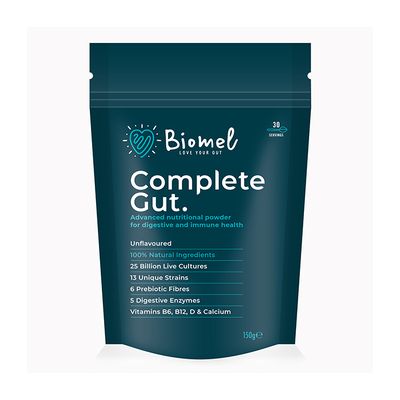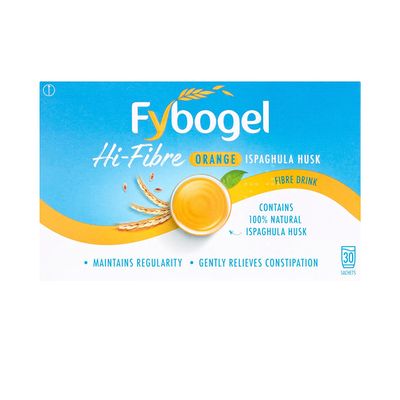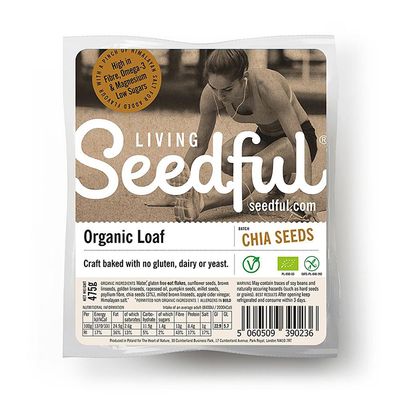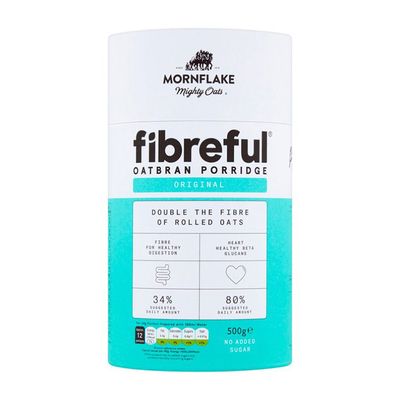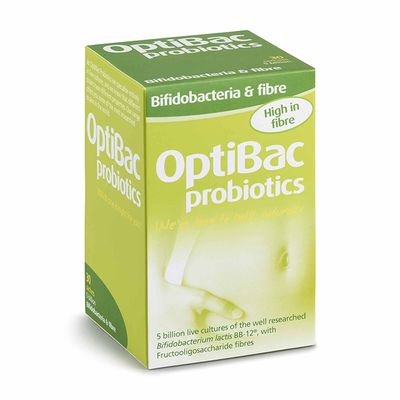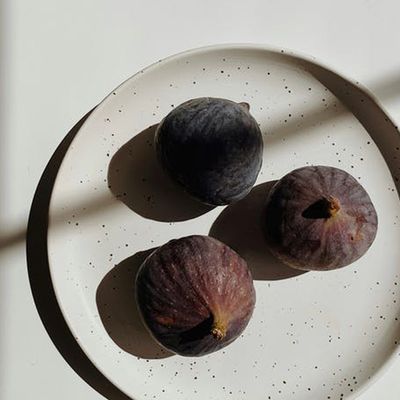
8 Health Benefits Of Eating More Fibre
All products on this page have been selected by our editorial team, however we may make commission on some products.
There Are Two Different Types
You can find fibre in fruit and vegetables; some breakfast cereals, breads and pasta that use wholegrains; pulses such as beans, lentils and chickpeas; as well as nuts and seeds. As nutritionist Clarissa Lenherr explains: “Fibrous foods contain both soluble and insoluble fibres, but one is often in higher amounts. The solubility refers to how they behave in the digestive system. Soluble fibres – such as oats, chia seeds, beans and lentils – swell and absorb water to form a gel, therefore bringing water into the digestive system, which can soften stools and help with constipation. Insoluble fibres – such as seeds, wholegrains and skins of fruits and vegetables – bulk out stools and keep things moving.”
You’re Probably Not Eating Enough
Since 2015, UK nutrition guidelines have recommended a daily fibre intake of 30g. Recent studies show just 9% of adults reach this target. As Clarissa explains, the average British woman consumes around 17g of fibre daily. By comparison, in rural parts of Africa, average fibre intakes can be around 60g per day. “30g of fibre plus per day is a great place to start,” she says. Experts believe our intake has dwindled because of food and lifestyle choices. We eat out more at restaurants where fibre isn’t a priority on the menu, and we often veer towards smoothies and juices over whole foods, which provides some fibre but in a less effective format than in a whole fruit. The rise in popularity of gluten-free foods is also taking its toll on our fibre intake – many gluten-containing foods are rich in fibre, so by cutting out something like bread, you’re losing a significant fibre source.
Constipation Isn’t The Only Sign You’re Deficient
“If you’re struggling with energy fluctuations throughout the day, this could be a sign you need to eat more fibre,” says Clarissa. “Fibre delays the absorption of sugar, helping to control blood sugar levels. Fibre-rich foods are filling and usually have a lower glycaemic index, which can help to control appetite and offset energy dips.” Constantly feeling peckish is also a sign you could do with upping your fibre intake, Clarissa adds. “Fibre slows the digestion process, helping you to feel fuller for longer. When soluble fibre is fermented in the large intestine, the body produces hormones that contribute to satiety levels.”
It Can Fight Disease…
Fibre may not get the airtime of other superfoods like omega-3s and turmeric, but increasing studies show it does more than preventing constipation. “Fibre is the number one superfood group,” Clarissa stresses. “Not only does it contain many different foods under its umbrella, but it has a giant list of benefits, disease prevention being one of them.” Clarissa explains that a high intake of dietary fibre is associated with significantly lower prevalence rates for cardiovascular disease, as well as diabetes and obesity. Fibre can also reduce cholesterol levels and feed your gut bacteria, in turn supporting good gut health. A recent meta-analysis, which examined 40 years’ worth of research, concluded people who consume 25-29g of fibre daily are up to 30% less likely to die prematurely from cardiovascular disease and up to 24% less likely to have a stroke or develop type 2 diabetes or colon cancer.
…And Help With Weight Management
Plenty of studies also link higher fibre intakes to weight management and weight loss. It’s also thought that inflammation in the gut caused by a low-fibre diet interferes with the way you digest and use calories from food, causing your body to store more excess calories as fat. “Because the body can’t digest fibre itself, it reaches the gut unchanged. Once it’s there, specific enzymes in your gut bacteria digest soluble fibre. Your gut bacteria ferment this fibre and produce short-chain fatty acids that actually help the body reduce fat,” Clarissa adds. “One small study has shown a 3.7% lower risk of gaining fat around the abdomen with a 10g daily increase in soluble fibre.” Moreover, the bulking effects of fibre in the colon regulate appetite by making you feel full, reducing the temptation to reach for the biscuit tin.
It’s An Affordable ‘Superfood’
Fibre-rich foods needn’t cost a fortune. In fact, fruit and vegetables are great sources – artichokes, green peas, kale, carrots and broccoli are particularly rich in fibre, containing 3-5g of fibre per 100g serving. Nuts and seeds are also a great source, with a 30g serving containing nearly 3g of fibre. Chia seeds are also packed full of fibre and can easily be added to everything from porridge to salads – one tablespoon provides 5.6g of fibre. Also stock up on kidney beans (half a can provides 11.5g of fibre); flaxseeds (3.5g in every tablespoon); oats (4g per 50g serving) and falafel made from chickpeas (around 5g per four balls).
Just Remember To Take It Slow
If you’re not used to eating a high fibre diet, increase your intake slowly by around 2-3g per day, which is more or less the amount of fibre in one apple. Some women are particularly sensitive to increases in dietary fibre, which can lead to bloating and flatulence. Remember to drink plenty of water when increasing your fibre intake too, say Dr Mayoni Gooneratne, founder of Human Health by The Clinic. “Fibre absorbs water so the more fibre you add to your diet, the more fluids you should drink. If you are suffering from intestinal gas, bloating or diarrhoea, know these symptoms should go away once your digestive system becomes used to the increase.”
Here, Dr Gooneratne shares her top tips for boosting your fibre intake…
-
Add puy lentils to your chili con carne or bolognaise – this is a great way to eat more plants, make your dish go further and provide a great source of fibre.
-
Flaxseeds often come in powder form, making them easy to add to all sorts of dishes without altering the taste. Plus, flaxseed is full of both soluble and insoluble fibre as well as protein and omegas.
-
Swap white, processed carbs like white bread and pasta for wholegrain varieties. 100g of cooked wholemeal spaghetti contains 4.5g of fibre.
-
Keep the skins on. Not peeling potatoes and other fruit and veg will keep the fibre intact.
-
Make sure half your dinner plate comprises of vegetables – ideally raw or lightly cooked.
-
Think about snacks. Swap crisps and packaged snacks for dried or fresh fruit or wholegrain oatcakes with hummus or avocado.
-
Top up your meals. Add a handful of raisins or nuts to breakfast cereals, seeds to salads and chickpeas to a stew.
-
Swap meat for plants. Reducing your meat intake and swapping out for plant-based foods is an instant way to up your intake and reap myriad health benefits at the same time.
Shop our fibre-boosting product edit...
For more information visit DrMHumanHealth.co.uk and ClarissaLenherr.com
DISCLAIMER: Features published by SheerLuxe are not intended to treat, diagnose, cure or prevent any disease. Always seek the advice of your GP or another qualified healthcare provider for any questions you have regarding a medical condition, and before undertaking any diet, exercise or other health-related programme.
CREDITS: NADI LINDSAY/PEXELS
DISCLAIMER: We endeavour to always credit the correct original source of every image we use. If you think a credit may be incorrect, please contact us at info@sheerluxe.com.
